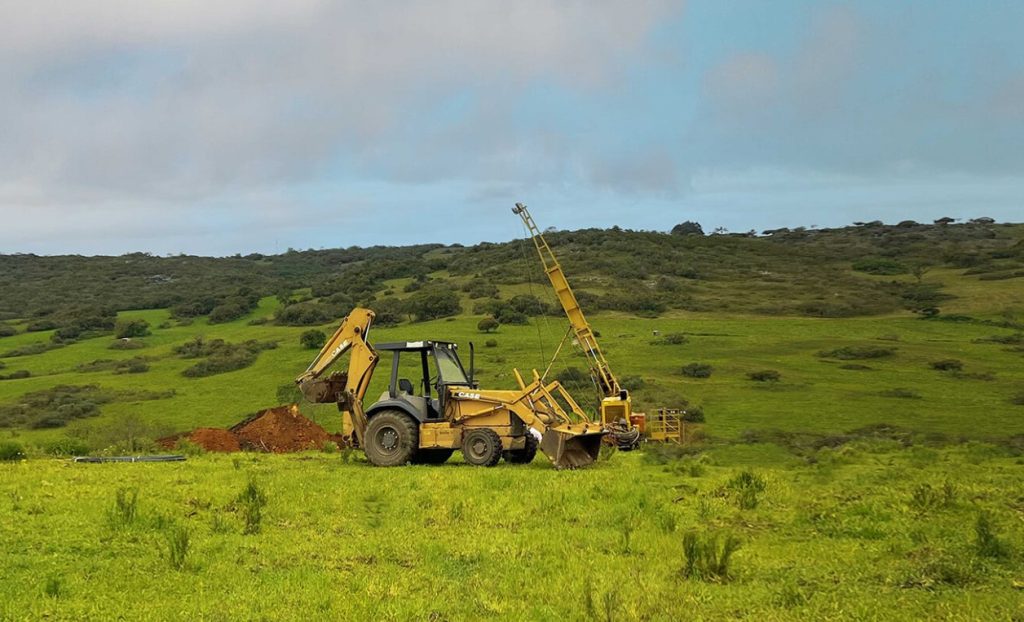Lavras Gold discusses Vila Marieta, Galvao gold discoveries

Lavras Gold Corp. [LGC-TSXV; LGCFF-OTCQB] has highlighted two new gold discoveries as well as the expansion of Zeca Souza as it provided an update on its second quarter.
“We followed the Matilde Extension gold discovery in Q1 with two more new gold discoveries, Vila Marieta and Galvao, in Q2,” said Michael Durose, president and CEO. “Then, after quarter-end, we announced seven new holes from Zeca Souza, which expanded the mineralized footprint of that target by more than 50%. We are very excited by this continued exploration success as we pursue a drill program aimed at expanding existing known mineralization and making new discoveries.”
Two rigs have completed 14,070 metres of a 16,000-metre drill program at the company’s LDS project in southern Brazil. Our average drilling, assay and related costs per metre is approximately $247. Results are consistently demonstrating that LDS is a unique, large and complex mineral system. Returned assays are a mix of bulk tonnage and high-grade, a combination that yields scale and economics in producing assets. The new gold discoveries in 2022 were at the Matilde and Zeca Souza targets, and historical results from another target, Caneleira, were also reinterpreted.
During the first quarter, the company built on these discoveries with yet another one – the Matilde Extension gold discovery. Then, in the second quarter, Lavras Gold added to its wealth of discoveries, announcing results from the Vila Marieta and Galvao targets.
The Vila Marieta gold discovery, believed to be the southwest surface extension of the Cerrito gold deposit, is noteworthy for two reasons: significant surface mineralization and long intervals.
Hole 22VM001 returned 28.00 metres at 1.30 g/t gold from surface, including 4.00 metres at 2.42 g/t gold from 7.00 metres and 5.00 metres at 2.49 g/t gold from 16.00 metres. It also returned a long interval of 53.00 metres at 0.68 g/t gold from 139.00 metres, including 7.72 metres grading 1.04 g/t gold from 148.00 metres.
These results are consistent with what is being seen elsewhere on the property: lower-grade halos of mineralization of 0.6 or 0.7 g/t gold with higher-grade intervals in between. At 1.30 g/t gold, the average gold grade from this surface mineralization is 85% higher than the average grade of Cerrito.
This has important positive implications for optimizing future potential open-pit mining scenarios since higher-grade surface mineralized material would ideally be mined first.
The Galvao gold discovery is important because it shows how deep the gold system at Lavras could go. A 10-metre-long interval of 4.63 g/t gold was hit starting at 532 metres down the drill core (which is 461 metres vertical depth) that included a three-metre subinterval grading 11.70 g/t gold.
Gold mineralization at Galvao was traced intermittently over 450 metres in strike length over a north-south direction and remains open to expansion.
After quarter-end, assay results were announced from seven new holes at Zeca Souza, where the area of known gold mineralization has been successfully expanded by over 50 per cent.
Visible gold is developing as a key feature of Zeca Souza and has been encountered in five of the 21 holes drilled. Some key take-aways include: visible gold near surface in hole 23BT004, which returned four metres at 43.59 g/t gold from 31 metres.
It is quite remarkable to find this grade of visible gold at such shallow depths and is a testament to the kind of exploration potential that exists; Zeca Souza has never been drilled prior to this drilling program; visible gold at depth in hole 23ZS018. Tis drill hole returned a mineralized interval of five metres at 2.62 g/t gold from 264 metres and included a one-metre interval of visible gold grading 9.07 g/t gold from 267 metres.
A long intercept of 32 metres grading 1.92 g/t gold from 126 metres in drill hole BT003; a zone of visible gold was observed in a 1.24-metre intercept grading 43.20 g/t gold at an estimated vertical depth of 124.7 metres.
The discovery of a higher-grade, potentially lower-tonnage zone of mineralization at Zeca Souza could potentially significantly enhance the overall future economics of the project. The objective will be to test for the continuity of these visible gold areas and possibly develop a high-grade sweet spot for the project.
Seven advanced mineral deposits/exploration discoveries have now been identified at LDS: Butia, Caneleira, Cerrito/Vila Marieta, Galvao, Matilde, Matilde Extension and Zeca Souza. All of these remain open at depth and along strike. Some, like Cerrito/Vila Marieta, may be connected.
The Lavras do Sul project is located in Rio Grande do Sul state and is primarily an intrusive-hosted gold system of possible alkaline affinity. More than 23 gold prospects centred on historic gold workings have been identified on the property, which spans more than 22,000 hectares.
